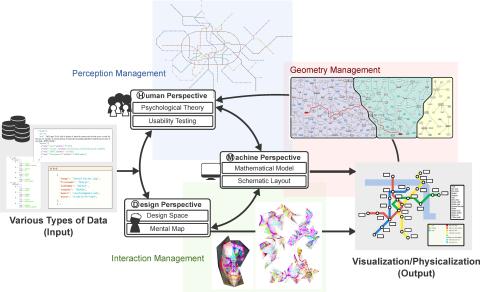Speaker: Hsiang-Yun Wu
The rapid advancement of digital transformation has made visualizing large and complex datasets essential for enhancing user experience and maintaining productivity. However, the lack of a strategic management for such data can result in over-cluttered and distracting representations, significantly reducing the cognitive efficiency of the visualization users. This research aims to reduce cognitive overload by systematically managing visual clutter using network theory, integrating Machine, Human, and Design perspectives into the iterative development loop.
This prospective habilitation thesis introduces a novel framework that leverages network-driven methodologies to analyze, organize, and optimize visual information. The selected approaches are categorized into three main components: Data-Driven Geometry Management, Human-Data Interaction Management, and Visual-Enhanced Perception Management. First management applies graph theory and optimization techniques to translate complex network relationships into readable spatial layouts, enabling users to follow intricate connections effectively. Second management applies networks in interaction design to encourage users in data comprehension, ensuring intuitive navigation and engagement. The final management leverages cognitive psychology to create visual outputs with human perceptual capabilities, improving clarity using symbolic network structures and evaluating corresponding feasibility. All contributions are published in leading peer reviewed computer science journals and conference proceedings.
